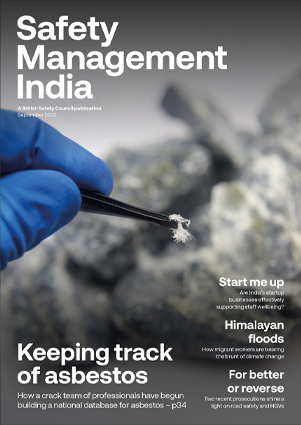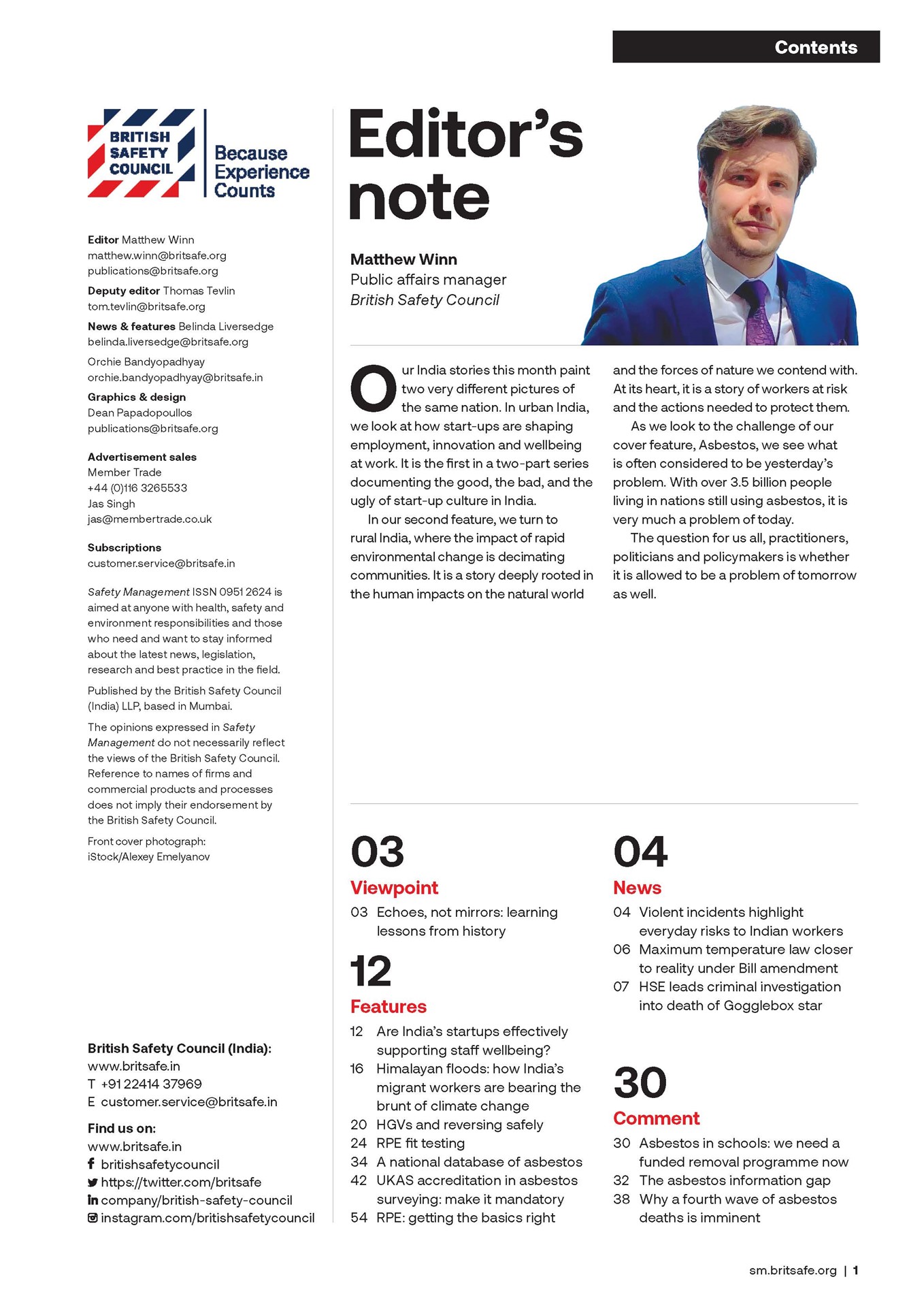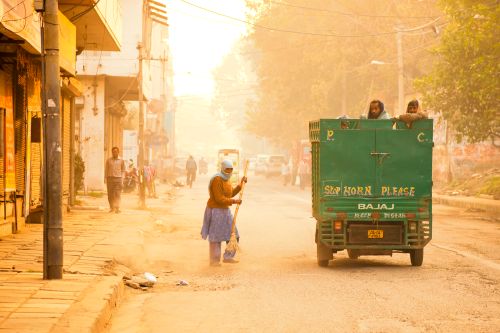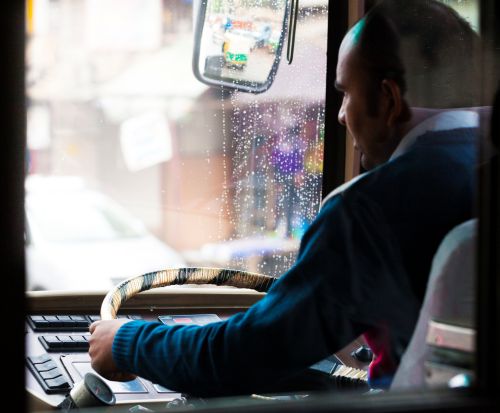High profile reports of violent attacks on people who drive for work purposes, like bus and delivery drivers, have shone a spotlight on the growing problem of road rage in India. Commentators say it is now time for the Government to step up prosecutions of those who act aggressively on the road, while educating drivers on stress management techniques, to tackle the problem.
Features
India’s road rage crisis: how professional drivers are bearing the brunt
India has a serious road safety problem. In 2023, more than 173,000 people were killed and 447,000 others injured in road accidents across the country, according to the National Crime Records Bureau (NCRB). Nearly 46 per cent of those killed were riders of two-wheelers, namely bicycles, scooters and motorcycles.
Although there are multiple causative factors behind these alarming figures, road rage forms a major part of the equation. According to NCRB data from 2019, 59.6 per cent of road crashes in India are caused by aggressive driving manoeuvres, such as speeding, while 25.7 per cent are associated with reckless overtaking.

Unfortunately, people who drive and ride for work purposes – such as bus, van and taxi drivers, and delivery workers on two-wheelers like scooters – often find themselves subject to violence and aggression from other road users.
In early November, a bus driver employed by Punjab Roadways bus company died after he was allegedly attacked by the driver of a sports utility vehicle (SUV) following an argument at a set of traffic lights in Mohali, near Chandigarh in Punjab. The bus driver, 36-year-old Jagjit Singh, was stopped at the lights and blew his horn to warn the SUV driver to move his vehicle into the correct lane so the bus could pass.
However, the SUV driver jumped out of his vehicle and struck Singh with a heavy rod. He immediately collapsed, and although he was taken to hospital and given medical treatment, he later died.
Following the incident, the SUV driver was arrested and, at the time of writing, was being held in custody while the police prepare criminal charges against him over Singh’s death.
Bus driver killed
Meanwhile, in October, a bus driver was killed after a group of men allegedly pelted him with bricks and stones following an argument at a petrol station in Dhoomangunj, near Prayagraj in Uttar Pradesh. According to media reports, the bus driver, named as 40-year-old Ravindra Kumar, was filling his vehicle with fuel when he became involved in a verbal altercation with a group of men. Although the motive for the attack is unclear, at the time of writing, local police had identified 11 suspects from the petrol station’s CCTV footage and were conducting raids of homes in the local area to locate them.
Also in October, a bus driver was violently attacked by two men wielding sharp weapons following an argument over men blocking the road with their vehicle in Pune. The 24-year-old bus driver, who suffered severe injuries, told police he was on his normal route transporting night-shift workers back home when a black car suddenly blocked his way. Four men stepped out of the vehicle, abused him for failing to let them to overtake, and attacked him with wooden sticks and a sharp weapon. Police later arrested two of the accused men.
In another incident in October –this time in Mumbai – a car driver assaulted a bus driver, Ahmad Aslam Mirza, following a dispute over space on the road.
According to media reports, Mirza’s bus and the driver’s car were stopped at a set of traffic lights, but the space between the vehicles was tight. As a result, Mirza told the driver there was no space for his car to pass the bus, but the driver ignored this and instead drove his vehicle forward and got stuck. He then dragged Mirza out of the bus by his shirt and started abusing him. The confrontation escalated, and when Mirza called the police helpline, the car driver attempted to flee, reversing his vehicle and running over Mirza’s foot in the process.
The country’s capital, Delhi, is also not immune to the problem of violence and aggression towards bus drivers, often fuelled by road rage. In 2015, a 42-year-old Delhi Transport Corporation (DTC) bus driver died after being savagely beaten by a motorcyclist. According to media reports, the assault began after the bus hit the motorcycle, injuring the pillion passenger, who was the motorcyclist’s mother.
The police later revealed that the accused motorcyclist had repeatedly struck the bus driver, named Ashok Kumar, with his helmet. The incident led to widespread protests by angry bus drivers and conductors demanding the city’s authorities do more to protect them from the threat of violence.
Assaults away from the highway
Road rage incidents also sometimes result in assaults taking place at locations away from the highway, with assailants following and locating drivers at their homes.
In an incident in October, a customs officer was brutally attacked following a road rage incident involving a car driver in Kolkata. The officer, Pradip Kumar, suffered a deep head wound after a mob stormed the residential complex where he lives and attacked him inside his apartment.
According to Kumar, the confrontation began when an auto-rickshaw hit his car as he was entering his housing complex. Following an argument, the driver returned with a mob of over 100 people and attacked the officer’s home.
Recounting the horrifying assault, Kumar said: “They broke the iron grille, the gate and the lock to get in. They pushed my wife, vandalised my flat and left me bleeding with a head injury.” He added he feared he was going to die in the attack and the fact he is a central government officer did not seem to deter the assailants.
Professional drivers also at fault
However, road rage incidents are not always one-sided, and there are numerous incidents where people who drive for work purposes have themselves instigated arguments and even assaults. Recently, a video posted online went viral, showing the aftermath of a road rage incident involving a school bus and a pickup truck in the Hadapsar district of Pune. The bus driver had allegedly deliberately rammed his vehicle into the pickup truck and assaulted the driver. The accused, identified as 32-year-old Suraj Ramesh Patil, was seen smashing the van’s windshield with a metal object.
Police arrested Patil for several alleged offences under the Bharatiya Nyaya Sanhita 2023, India’s new criminal code, including dangerous driving, assault and criminal intimidation. In a public show of zero tolerance to violence from bus drivers and other commercial drivers, the police paraded Patil on his knees at the site of the incident and released a ‘before and after’ video showing both the altercation and his public apology.
Meanwhile, the death of a 20-year-old woman in a widely publicised incident in Delhi on New Year’s Day in 2023 further exposed the dark side of road rage and reckless driving and sparked widespread public debate about the country’s poor road safety culture and standards.
The woman, an events manager, was returning from work death of a 20-year-old event manager, who was returning from work in the early hours of New Year’s Day when the scooter she was riding collided with a car.
Police said the driver of the car driver, which was carrying four passengers, failed to stop and instead continued driving, dragging the woman’s body for 11 kilometres. The young woman had become her family’s sole breadwinner following the death of her father, meaning the fatal incident left her family in a dire financial position. The woman’s mother, who is unable to work due to illness, said tearfully: “We don’t even have money to perform her last rites.”
Following the incident, several CCTV videos emerged showing the woman’s body underneath the car. The driver of the car, and its four occupants, claimed in police interviews following their arrest that they did not hear the victim’s screams as they were playing loud music in the car. It was widely reported that said the driver and the four passengers were drunk.
The incident gained national attention following widespread media coverage, with commentators saying it highlighted the problem of reckless driving and alarming disregard for human life on India’s roads.
Reckless driving increases the risks of a collision
Research has shown that drivers who are easily angered, or prone to outbursts of anger, are more likely to engage in reckless driving manoeuvres in an effort to save time or experience thrills and exciting sensations.
However, driving recklessly on a regular basis greatly increases the chances of causing or being involved in a collision, especially during complex and challenging driving situations, such as tailgating vehicles and trying to dominate other vehicles and drivers at intersections where the other driver actually has the right of way.
According to a study of 500 drivers in Delhi-NCR, every respondent reported witnessing at least one road rage incident, ranging from verbal abuse to physical assault. Poor traffic management, long commuting hours and high temperatures were cited as some of the top triggers for road rage incidents.
Dr Rajesh Sagar, professor of psychiatry at the All India Institute of Medical Sciences (AIIMS), says the roots of road rage lie in a combination of driver stress, poor emotional regulation by drivers and reactions to the driving environment.
“Contrary to popular perception, ‘letting it rip’ is the worst thing you can do in a stressful situation,” he explains. “It only escalates aggression and does nothing to resolve the problem. Heat, frustration and lack of control can create a toxic mix on the road.”
Spike in road rage incidents during summer
In fact, a study by the University of Western Australia found that road rage incidents in Australia spike during summer months, when temperatures exceed 40°C, and commentators say this finding is mirrored by traffic police data in Delhi, which also show an increase in road rage reports during the hottest moths of the year.
“The heat and humidity outside often make the driver irritable and angry,” says Dr Sagar, who co-authored Road Rage: An Exploratory Study on Aggressive Driving Experiences on Indian Roads. “Even a minor provocation can lead to loss of temper.”
The University of Western Australia study found that blowing the vehicle’s horn, aggressive overtaking manoeuvres, playing loud music inside the vehicle and a hot and humid climate significantly increased the risk of drivers experiencing feelings of anger. Drivers prone to becoming angered were significantly more likely to engage in direct and aggressive expressions of anger through their driving, including overtaking, verbal abuse, shouting and arguing, failing to grant sufficient space to other vehicles, fighting, and hitting and bumping other cars in protest.
Data from Delhi’s Traffic Police stretching over a decade also shows a clear seasonal pattern. The data shows that violations such as jumping red lights and road rage incidents increase during the summer season. In winter, meanwhile, there is a surge in cases of drink-driving.
Enforcement and education ‘are key’
Experts say that to reduce incidents of aggressive driving and road rage, a combination of stronger law enforcement – such as increased numbers of prosecutions and fines – and education is required, arguing that law enforcement on its own will not reduce the problem.
Prabhu Kumar, a road safety and driver behaviour expert, said: “Certain offences like aggressive driving and verbal abuse have a seasonal nature. Awareness campaigns targeted at these patterns can reduce incidents. Even small acts like keeping photos of loved ones on dashboards can act as emotional anchors during tense moments.”
Traffic police say that offenders who are convicted following violent incidents on the road often undergo counselling sessions with behavioural experts.
Psychiatrists also warn that when people suppress feelings of stress, this can also lead to aggressive behaviour on the road. In addition, Dr Samir Parikh, chairperson of the National Mental Health Programme at Fortis Healthcare, argues that feelings of stress among people like commuters and drivers may have a deeper cultural cause.
“Corporate and urban lifestyles are driving people to the edge,” he says. “Cut-throat competition, tight deadlines and limited family time mean people carry unresolved stress. The car becomes their only private space and unfortunately, that’s where the frustration explodes.”
Anil Kumar Grampurohit, who heads the traffic management centre in Bengaluru, says there is no particular section of the law under which incidents of road rage cases are registered. “There is no term like road rage in the Indian Penal Code (IPC) and therefore no mention of punishment or fine for such cases,” he explains.
“The traffic police register cases that involve violence or brawls in traffic or of voluntarily causing hurt to others under various sections of the IPC.”
Varini G, research fellow at the Vidhi Centre for Legal Policy in Karnataka, says that prosecutions for offences related to road rage should be taken under the Motor Vehicles Act (MVA), rather than under other traffic or road safety laws.
With the number of cars and two-wheelers, like scooters, on the roads increasing year-on-year, commentators say that urban roads are now not only hugely congested, but also emotionally combustible. Experts believe tackling road rage requires a multi-layered approach – such as stronger enforcement of traffic laws and tougher penalties for driving offences connected to incidents of road rage; psychological interventions for professional drivers; better education about ways of manage feelings of stress, both in schools and in the corporate world; and public awareness campaigns encouraging, and highlighting the benefits of, empathy and patience on the road.
Dr Parikh puts it: “Road rage is not just about bad driving – it’s a reflection of a society under pressure. If we don’t address the underlying stress, our roads will keep reflecting our collective anger.”


FEATURES

Delhi’s air pollution problem leaves construction workers jobless and without pay
By Orchie Bandyopadhyay on 10 November 2025
Every autumn and winter, Delhi experiences terrible air pollution that places the health of its 40 million residents at grave risk. But government measures to alleviate the problem by temporarily closing construction sites mean hundreds of thousands of daily-wage labourers are being left without wages and a means of financial support.

India’s road rage crisis: how professional drivers are bearing the brunt
By Orchie Bandyopadhyay on 10 November 2025
High profile reports of violent attacks on people who drive for work purposes, like bus and delivery drivers, have shone a spotlight on the growing problem of road rage in India. Commentators say it is now time for the Government to step up prosecutions of those who act aggressively on the road, while educating drivers on stress management techniques, to tackle the problem.

